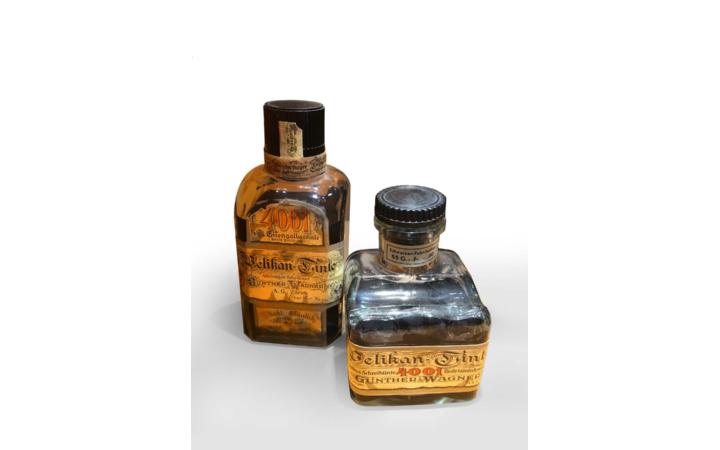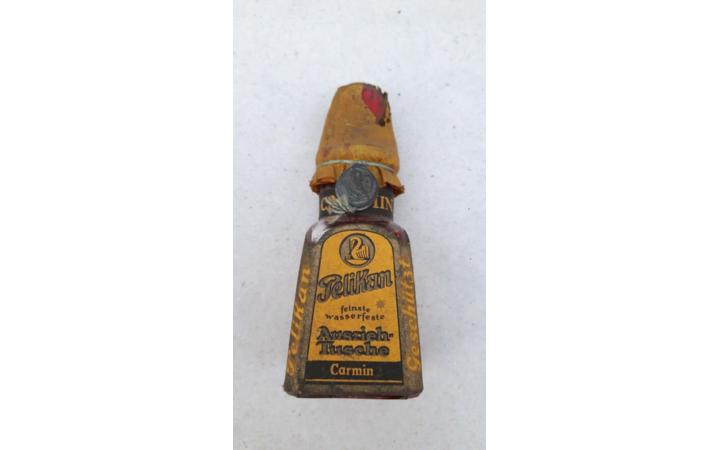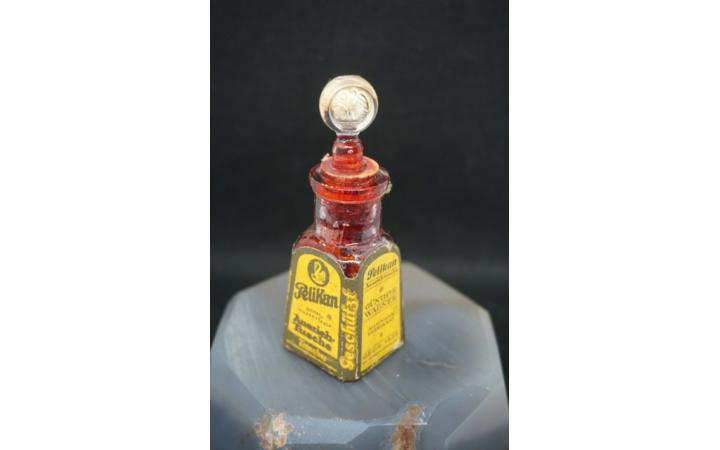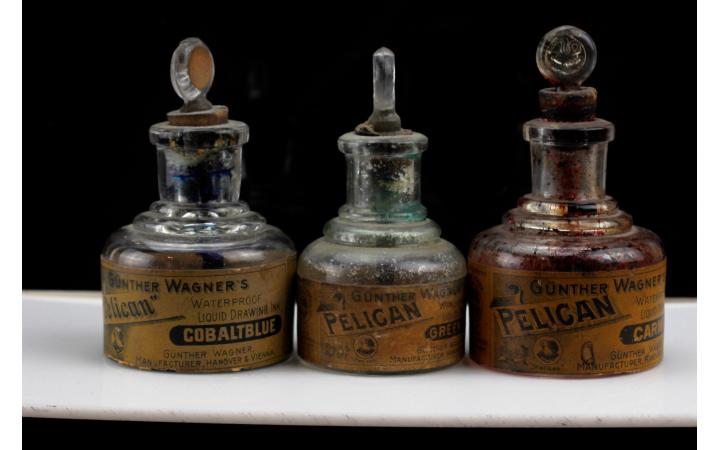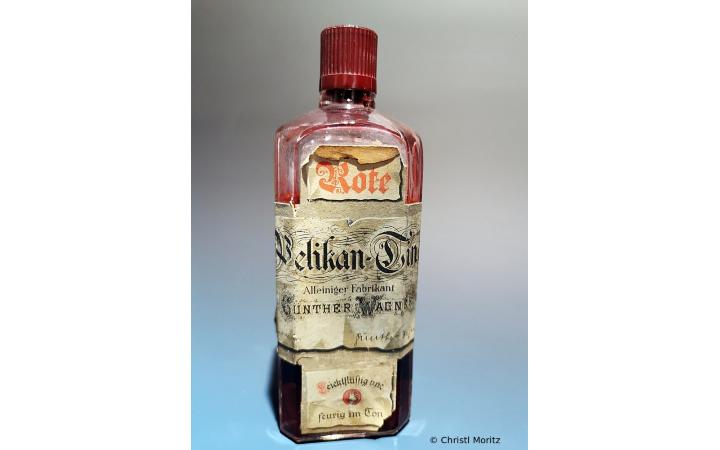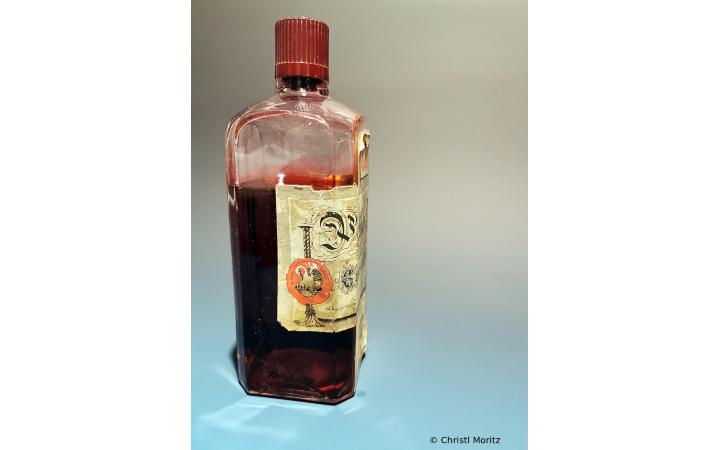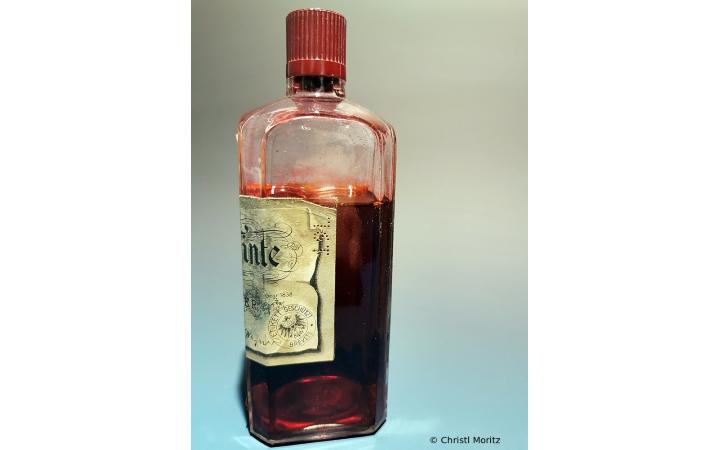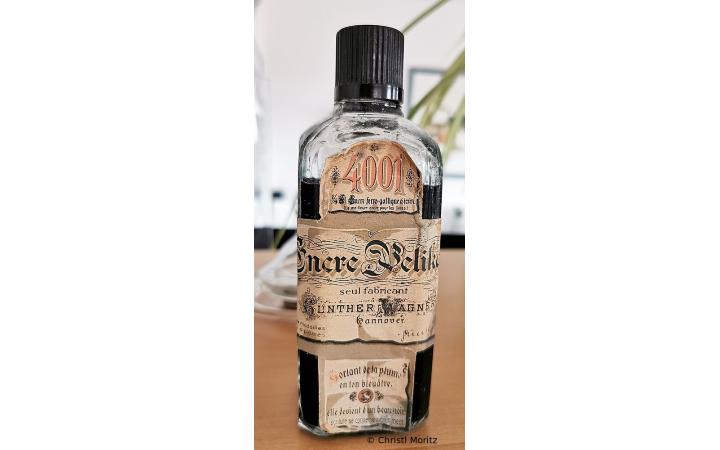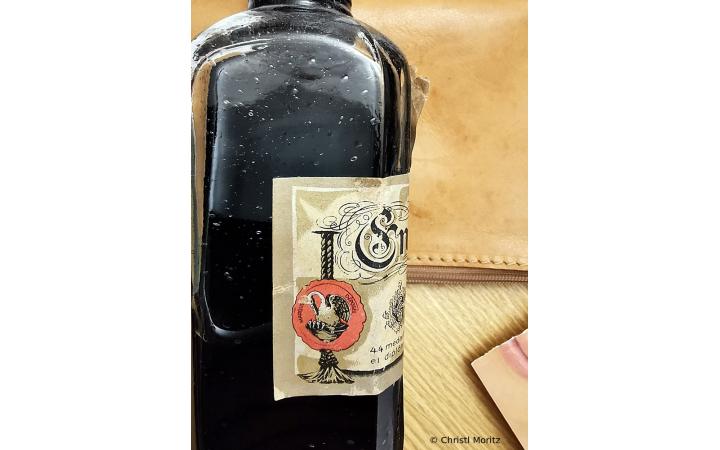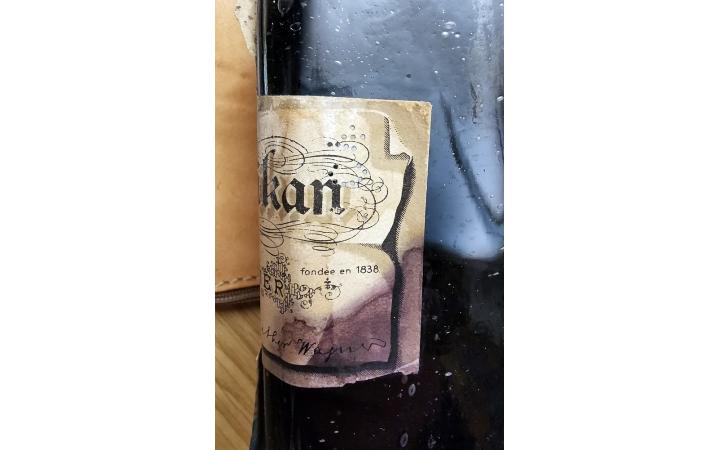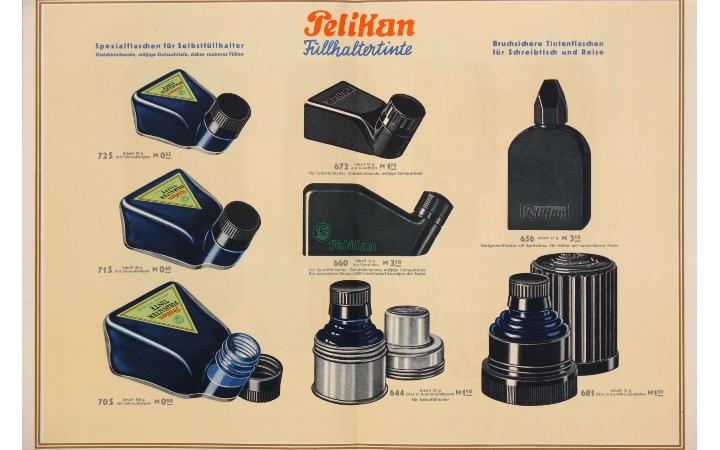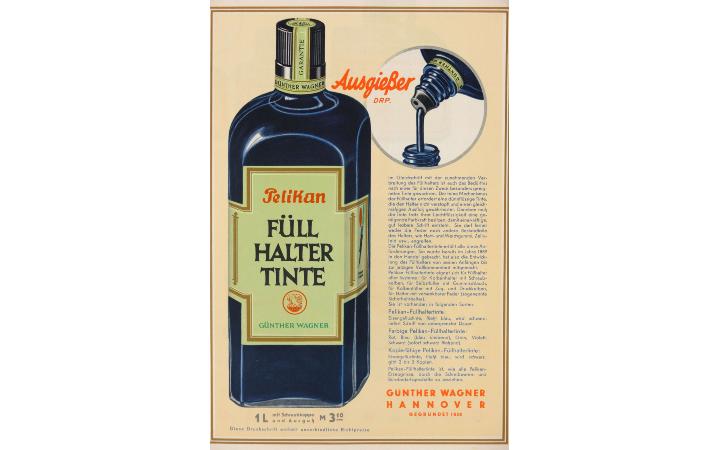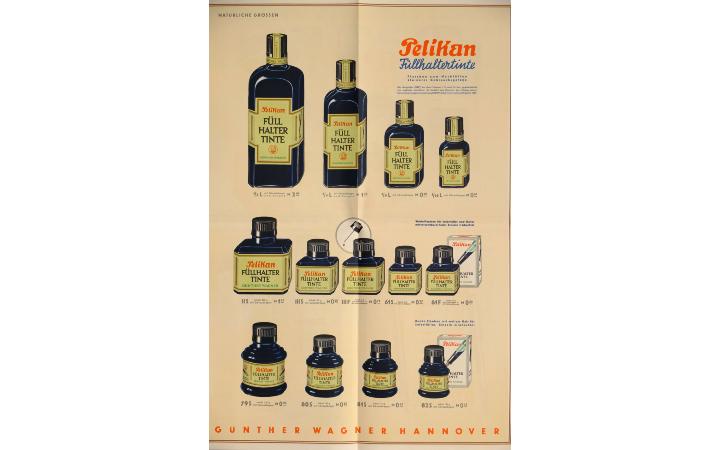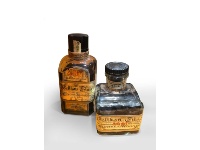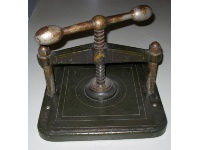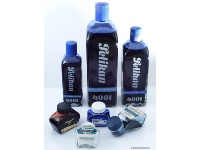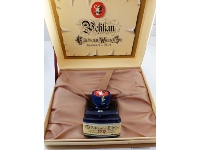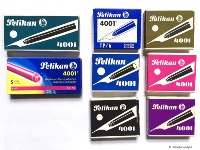- Historical ink types
- Copying press; the historical background
- How the copying press works
- 4001 Fountain pen ink
- Fountain pen ink 4001
- Colored ink
- Purple salon ink
- Iron gall ink 2001
- Strong copy ink 3001
- Book and writing ink 4001 (historical version)
- Book and copy ink 5001
- Copy ink 6001
- German imperial ink
- Imperial ink
- Black ink
- Check ink
- Office inks 626, 628 and 629
- Office inks 630 and 633
- Special purpose inks
Historical ink types
There are three types of historical ink:
1. iron gall inks,
2. blue wood inks,
3. Colored inks.
All three inks were available as both writing and copy inks.
But what did "copying" mean during the imperial era ...
The source for the following explanation is Wikipedia:
Copying press; the historical background
Since 1862, the General German Commercial Code required all merchants to keep a “copy or transcript” of the commercial letters they sent. In order not to have to copy the originals, mechanical copying machines were used. The copying press was used in many offices well into the 20th century.
How the copying press works
The document to be copied, described with special ink, was placed on a sheet of wax paper and covered with unsized tissue paper, which was either moistened beforehand or in turn covered with a piece of damp cotton fabric. Finally, another sheet of wax paper was placed on it and the whole thing was subjected to high pressure between the two metal plates of a tightly-tightened screw press (in which numerous layers of copy material could also be pressed at the same time). The ink was loosened by the moisture and penetrated through the tissue paper, so that the writing on the back was correctly visible.
With good copy ink, about three prints can be made. Up to 20 prints can be made using highly concentrated ink and tissue paper soaked in special solutions. After the copying process, the tissue paper can be stuck to thicker paper so that the copy is easier to read and more durable.
Source: https://de.wikipedia.org/wiki/Kopierpresse
4001 Fountain pen ink
Fountain pen ink 4001
Inks that do not corrode and work well in the fine mechanics of the Pelikan piston fountain pens have been specially designed for fountain pens. Later, probably for marketing reasons, it became the modern type of ink "4001".
Blue-black was designed as a particularly light iron gall ink that is bluish when wet, but darkens. An "unlimited duration" and insensitivity to light were specified for the shelf life (catalog 1938).
As usual, the colored inks are not suitable for special durability or copies, but are uncomplicated writing inks.
Copy ink is a copyable variant of the blue-black.
Blue-black
Red
violet
blue
green
Jet black
Copy ink
Container
Available in almost all containers, including bottles from 62.5 ml to 2000 ml, lying glasses 70S (100 ml) to 72S (35 ml), cube glasses from 35 ml to 200 ml, tire glasses from 30 ml to 120 ml, four travel ink bottles made of hard rubber or Synthetic resin, or larger containers calculated by the liter.
Source:
Pelikan catalog 1938, p. 170.
Colored ink
Flowable and brilliant dye inks. Difficult to copy.
The slightly more expensive red copier ink was intended as the color ink that could be copied.
Red
blue
green
violet
yellow
Brown
Red copy ink
Container
Available in many containers, including bottles from 62.5 ml to 2000 ml, spring supports from 35 ml to 65 ml, cube glasses from 15 ml to 35 ml, the rare shaped glass 17 (15 ml), or larger containers calculated by the liter.
Source:
Pelikan catalog 1938, p. 172.
Purple salon ink
From a technical point of view, probably similar to colored ink.
Iron gall ink 2001
Iron gall ink that writes and dries black.
1L - bottle with spout (1000ml)
1 / 2L - bottle with spout (500ml)
64S - spring layer with screw cap (35ml)
Source:
Pelikan catalog 1938, p. 177.
Strong copy ink 3001
A violet writing blue wood ink was sold under the type 3001, which darkens black. "Gives 3 to 5 copies on the copier" (Catalog 1938). Copying does not mean the current Xerox process, but the xxx process, which made special demands on the original to be reproduced.
Book and writing ink 4001 (historical version)
Originally a “real iron gall ink” (1938 catalog) was sold under the 4001 variety, which flows bluish and dries black. It should be uncomplicated to use and document-proof - i.e. insensitive to light and age. It is not related to the modern 4001.
Book and copy ink 5001
Copyable (2 to 3 copies possible) iron gall ink that darkens black was sold under the 5001 variety.
The type 5001 K was also available, which, as a strong iron gall ink, is not suitable for books, but is all the more easy to copy.
Source:
Pelikan catalog 1938, p. 177.
Copy ink 6001
A violet copier ink was sold under the type 6001, which yields “5 to 6 clear copies” (catalog 1938). Also available in copier form than 6001 K. Wasn't meant for books.
German imperial ink
Iron gall ink that writes bluish and dries black.
Container
1L - round tire bottle with handle cork (1000ml)
64 - spring layer with high cork (35ml)
Larger containers are also charged by the liter.
Source:
Pelikan catalog 1938, p. 177.
Imperial ink
Blue wood ink that writes violet-black and darkens considerably when it dries.
Container
1L - round tire bottle with handle cork (1000ml)
1 / 2L - round tire bottle with handle cork (500ml)
64 - spring layer with high cork (35ml)
Source:
Pelikan catalog 1938, p. 177.
Black ink
Blue wood ink that writes violet-black and darkens considerably when drying. Possibly marketed as a matching ink for the black fountain pen.
Container
1L - round tire bottle with handle cork (1000ml)
1 / 2L - round tire bottle with handle cork (500ml)
64 - spring layer with high cork (35ml)
Source:
Pelikan catalog 1938, p. 177.
Check ink
Deep black ink for securities that require special chemical and physical resistance, such as checks or stocks.
Container
1L - bottle with spout (1000ml)
1 / 2L - bottle with spout (500ml)
1 / 4L - bottle with spout (250ml)
64S - spring layer with screw cap (35ml)
Source:
Pelikan catalog 1938, p. 177.
Office inks 626, 628 and 629
Iron gall inks for mass office and school use that flow black (629) or black-blue (626, 628) and dry black.
• 626 - bluish school ink
• 628 - bluish office ink
• 629 - black school ink
Container
Only larger containers are charged by the liter.
Source:
Pelikan catalog 1938, p. 175.
Office inks 630 and 633
Blue wood inks for mass office and school use that flow purple-black and darken black when drying.
• 630 - black office and office ink
• 633 - black school ink
Container
Only larger containers are charged by the liter.
Source:
Pelikan catalog 1938, p. 175.
Special purpose inks
Even before World War II, Pelikan offered an extensive range of several special inks, some of which survived into the post-war period. This included a large number of technical inks, the purpose of which was later replaced by other writing methods or which were intended for use in apparatus. Pelikan offered to determine the most suitable ink variant by sending in a sample (e.g. catalog 1964, p. 17).
• Red Markana ink - for writing on greasy paper, tin and other surfaces where normal ink tends to pearly. The name Markana was later used for felt-tip pens.
• Hotel ink - dark blue dye ink that can be washed out of textiles. Later probably replaced by the 4001 royal blue.
• All Weather Ink - black, weatherproof ink for harsh outdoor use.
• Waterproof lined ink - for drawing writing lines in business books and exercise books that does not run and is indelible. Available in five colors (black, blue, red, green and purple). Later apparently out of fashion due to lined notebooks.
• Cut Color - made for bookbinders for coloring book cuts. Available in four colors (red, blue, light green, dark green).
• Colored school ink - ink intended for art lessons, available in six basic colors (vermilion, blue, yellow, black carmine, burnt sienna). The "ink" in the name does not refer to real ink, but to the colloquial term "ink" for painting with liquid colors of any kind.
For more see special inks
Container
Most of these inks were available in bottles with a spout (especially 1L) and in a spring holder with a screw cap (especially 61S or 64S).
Source:
Pelikan catalog 1938, pp. 178–179.
For a good exchange the forum The Fountain Pen Network - FPN.


